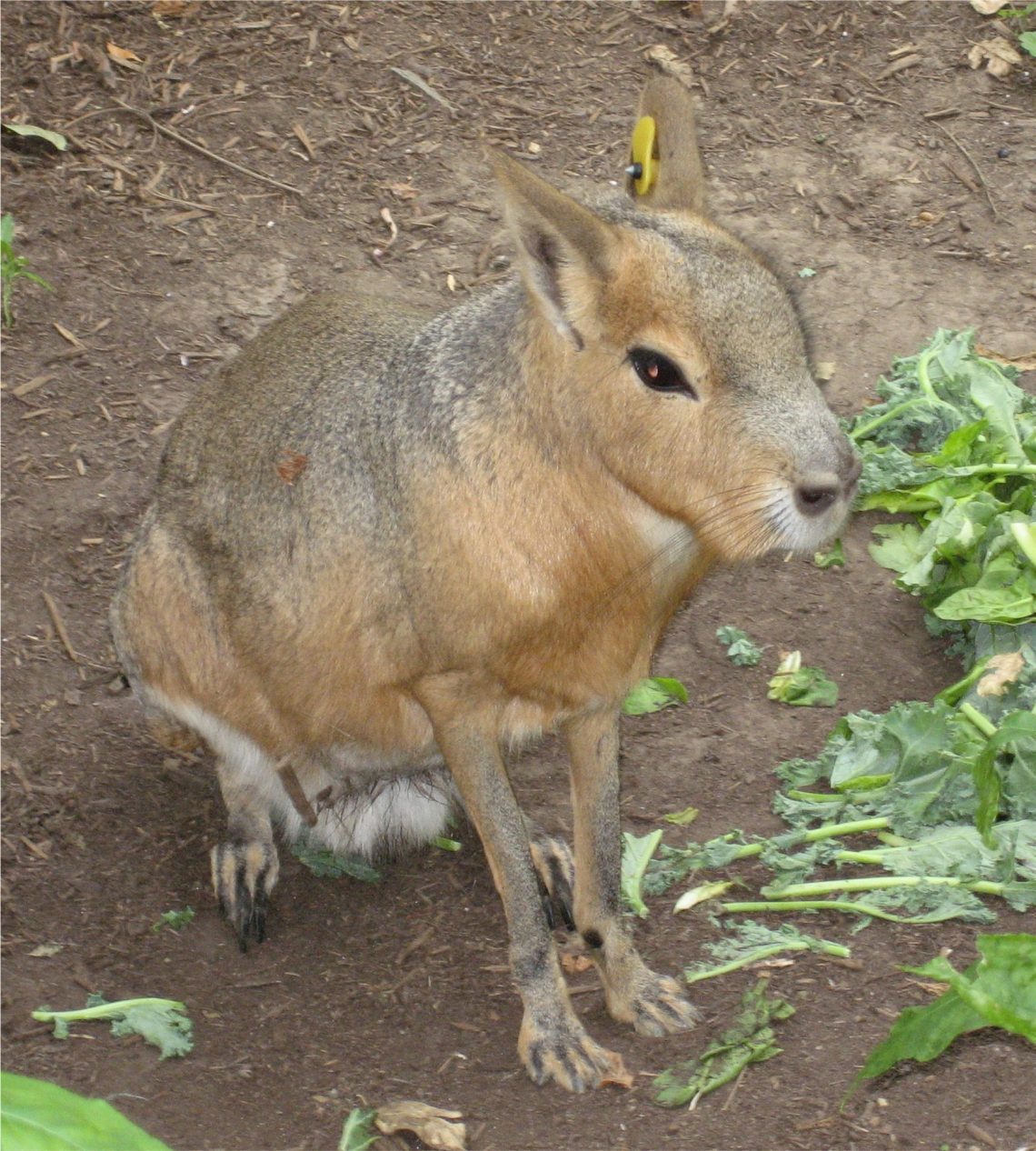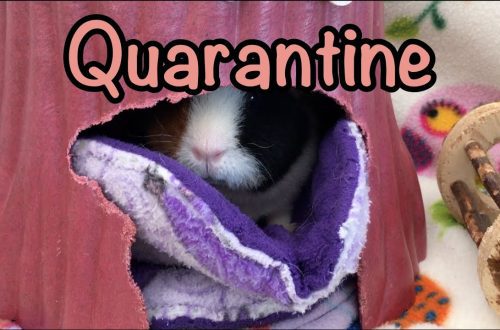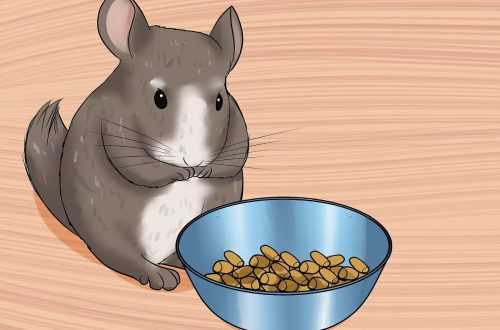
Relatives: Mara
Mara (Dolichotis patagona) is a rodent belonging to the same as the mumps, the family of semi-ungulates (Caviidae). It lives in the pampas of Argentina and in the rocky expanses of Patagonia. A large animal, unlike other rodents. It looks like a hare. The length of the head with the body is 69-75 cm, body weight – 9-16 kg. Mara has a brown-gray, grayish or brownish-brown with a white “mirror” at the back, like a deer, a thick fur coat, which becomes rusty on the sides, and whitish on the belly. The mara has long and strong legs, the muzzle strongly resembles a hare, but with large short ears. Large black eyes are covered with thick eyelashes that protect them from the bright sun and strong wind that carries sand in the dry plains of Patagonia.
Mara (Dolichotis patagonica) Usually lives in small flocks. Moves by jumping. These animals are active during the day. They spend the night in burrows. In a populated area, it goes out to get food at dusk, in other territories – around the clock. This rodent digs holes or uses shelters abandoned by other animals. Usually found in pairs or small groups of up to 10-12 individuals. In one litter, 2-5 cubs are born. Well-developed cubs are born in burrows, capable of running immediately. In danger, adults always run to escape.
Mara (Dolichotis patagonica) An excellent description by eyewitness J. Durrell shows the habits and living conditions of this animal from South America: “As we approached the sea, the landscape gradually changed; From the flat terrain became slightly undulating, in some places the wind, tearing off the top layer of soil, exposed yellow and rusty-red pebbles, large spots of which resembled sores on the fur skin of the earth. These desert areas seemed to be a favorite haunt of curious animals – Patagonian hares, because on the sparkling pebbles we always found them in pairs, and even in small groups – three, four.
Mara (Dolichotis patagonica) They were strange creatures that looked as if they were blinded very casually. They had blunt muzzles, very similar to those of a hare, small, neat rabbit ears, and small thin front legs. But their hind legs were large and muscular. What attracted them most of all was their large, black, shiny eyes with a dry fringe of eyelashes. Like miniature lions in Trafalgar Square, the hares lay on the pebbles, basking in the sun, looking at us with aristocratic arrogance. They let them get pretty close, then suddenly their languid eyelashes languidly fell down, and the hares with amazing speed found themselves in a sitting position. They turned their heads and, having looked at us, were carried away to the flowing haze of the horizon with gigantic springy leaps. The black and white spots on their rears looked like receding targets.”
Mara is a very nervous and shy animal and can even die from unexpected fright. It feeds on various plant foods. Apparently, the beast almost never drinks, being content with the moisture contained in the tough grasses and branches.
Mara (Dolichotis patagona) is a rodent belonging to the same as the mumps, the family of semi-ungulates (Caviidae). It lives in the pampas of Argentina and in the rocky expanses of Patagonia. A large animal, unlike other rodents. It looks like a hare. The length of the head with the body is 69-75 cm, body weight – 9-16 kg. Mara has a brown-gray, grayish or brownish-brown with a white “mirror” at the back, like a deer, a thick fur coat, which becomes rusty on the sides, and whitish on the belly. The mara has long and strong legs, the muzzle strongly resembles a hare, but with large short ears. Large black eyes are covered with thick eyelashes that protect them from the bright sun and strong wind that carries sand in the dry plains of Patagonia.
Mara (Dolichotis patagonica) Usually lives in small flocks. Moves by jumping. These animals are active during the day. They spend the night in burrows. In a populated area, it goes out to get food at dusk, in other territories – around the clock. This rodent digs holes or uses shelters abandoned by other animals. Usually found in pairs or small groups of up to 10-12 individuals. In one litter, 2-5 cubs are born. Well-developed cubs are born in burrows, capable of running immediately. In danger, adults always run to escape.
Mara (Dolichotis patagonica) An excellent description by eyewitness J. Durrell shows the habits and living conditions of this animal from South America: “As we approached the sea, the landscape gradually changed; From the flat terrain became slightly undulating, in some places the wind, tearing off the top layer of soil, exposed yellow and rusty-red pebbles, large spots of which resembled sores on the fur skin of the earth. These desert areas seemed to be a favorite haunt of curious animals – Patagonian hares, because on the sparkling pebbles we always found them in pairs, and even in small groups – three, four.
Mara (Dolichotis patagonica) They were strange creatures that looked as if they were blinded very casually. They had blunt muzzles, very similar to those of a hare, small, neat rabbit ears, and small thin front legs. But their hind legs were large and muscular. What attracted them most of all was their large, black, shiny eyes with a dry fringe of eyelashes. Like miniature lions in Trafalgar Square, the hares lay on the pebbles, basking in the sun, looking at us with aristocratic arrogance. They let them get pretty close, then suddenly their languid eyelashes languidly fell down, and the hares with amazing speed found themselves in a sitting position. They turned their heads and, having looked at us, were carried away to the flowing haze of the horizon with gigantic springy leaps. The black and white spots on their rears looked like receding targets.”
Mara is a very nervous and shy animal and can even die from unexpected fright. It feeds on various plant foods. Apparently, the beast almost never drinks, being content with the moisture contained in the tough grasses and branches.





